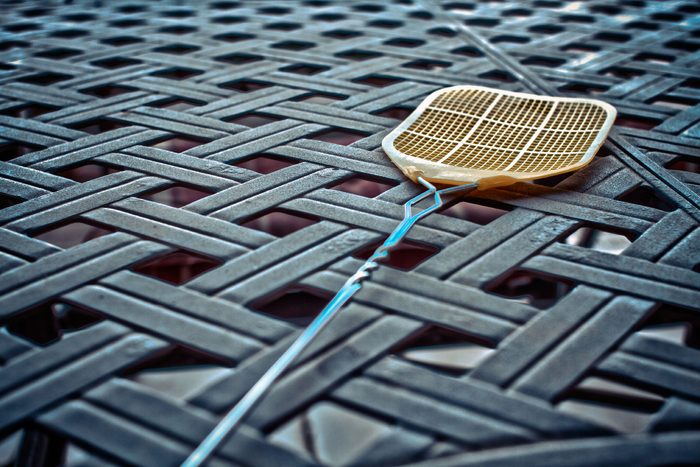
According to the Mayo Clinic, you are the proud owner of about 86 billion neurons, the nerve cells in your brain. To stay sharp and happy you want to keep as many of them as possible, especially as you get older. How? You have to give them a good brain workout every day.
Neurons are the definition of “use it or lose it”—meaning that just like skipping leg day at the gym will give you weak legs, not exercising your brain will decrease your cognitive strength over time. It will also take a toll on your mental health and overall wellbeing, says Scott Kaiser, MD, Director of Cognitive Health at the Brain Health Center at the Pacific Neuroscience Institute and a geriatrician with Providence Saint John’s Health Center in Santa Monica, California.
“The good news is that it doesn’t take a lot of brain ‘exercise’ to start seeing positive changes,” he explains. “Our brains are so finely tuned that an improvement in one area will cause a cascade of positive changes throughout.”
If only working your brain was as simple as lifting some weights or going on a run (although physical exercise can give you a brain boost too!). It doesn’t have to be complicated though! The answer? “Neurobics!” (You know, like aerobics, but for your brain.)
Get The Healthy @Reader’s Digest newsletter
“Neurobic” exercises are like cross-training for your brain
Giving your brain new experiences that combine physical senses—vision, smell, touch, taste, and hearing—with emotional “sense” stimulates more connections between different brain areas, causes nerve cells to produce natural brain nutrients that dramatically help memory, and makes surrounding cells stronger and more resistant to the effects of aging. Try these brain exercises—devised by neurobiologist Lawrence C. Katz, PhD, and Manning Rubin for the book Keep Your Brain Alive—during your morning routine or your downtime and see if you feel the difference.
15 Things to Start Doing at 50 That’ll Save Your Brain at 80

1. Brush your teeth with your non-dominant hand
Research has shown that using the opposite side of your brain (as in this exercise) can result in a rapid and substantial expansion in the parts of the cortex that control and process tactile information from the hand. Brain exercise: Brush with the hand you wouldn’t normally use, and don’t forget to open the tube and apply toothpaste in reverse, too. Here are more morning brain boosters to do before work.

2. Shower with your eyes closed
Your hands will probably notice varied textures of your own body that you don’t “see” and will send messages back to your brain. Brain exercise: Try putting some soap in your hands, feel how it lathers, and then scrub your body, noting how it smells and feels. Then wash, shave and so on with your eyes shut. (Okay, maybe not shave but you get the idea!)

3. Switch around your morning activities
Brain imaging studies show that novel tasks exercise large areas of the cortex, indicating increased levels of brain activity in several distinct areas. This activity declines when the task becomes routine and automatic. Brain exercise: Get dressed after breakfast, walk the dog on a new route or change your TV or news station. Even watching a kids’ program like Sesame Street, for example, may arouse the brain to notice how much of what you take for granted is explored in depth by children. As a brain-boosting bonus, teaching things to others (like your kids) helps strengthen and reinforce what you’ve learned—building even more powerful neurons in both of you.

4. Turn familiar objects upside down (literally)
When you look at things right-side up, your left “verbal” brain quickly labels it and diverts your attention elsewhere. When they’re upside down, your right brain networks kick in, trying to interpret the shapes, colors and relationships of a puzzling picture. Brain exercise: Turn pictures of your family, your desk clock or an illustrated calendar upside down.

5. Switch seats at the table
In most families, everyone has his or her “own” seat, but your brain benefits from new experiences. Brain exercise: Switch seats to change which position you occupy, who you relate to, your view of the room, and even how you reach for salt and pepper.

6. Make a new connection with your nose
You probably don’t remember when you “learned” to associate the smell of coffee with the start of a day. However, by linking a new odor—say, vanilla, citrus or peppermint—to an activity, you’ll alert new neural pathways. Brain exercise: Keep an extract of your favorite scent near your bed for a week. Open it and inhale when you first wake up, and then again as you bathe and dress. Or have several vials and sniff each one with your eyes closed, seeing if you can differentiate between the scents. You might be surprised at how challenging it can be!

7. Open the car window
The hippocampus, an area of your brain that processes memories, is especially involved in associating odors, sounds, and sights to construct mental maps. Brain exercise: Try to identify new smells and sounds on your route. Opening the windows provides these circuits with more raw material. This trick works at home too: This is Why You Should Stop Closing Your Blinds During the Day.

8. Play with spare change
Because our brains regularly rely on visual cues to distinguish between objects, using touch to identify subtly different things increases activation in cortical areas that process tactile information and leads to stronger synapses. (Similarly, adults who lose their sight learn to distinguish Braille letters because their brain devotes more pathways to processing fine touch.) Brain exercise: Place a cup full of coins in your car’s drink holder. While at a stoplight, try to determine the denominations by feel alone. You can also put coins in your pocket during a walk, and identify them when you stop at a corner. Here are 12 more easy ways to get smarter in your spare time.

9. Play “10 Things”
Forcing your brain to think of alternatives to the everyday will help keep it strong. Brain exercise: Someone hands you an ordinary object, and you must demonstrate 10 different “things” that the object might be. For example, a fly swatter might be a tennis racket, a golf club, a fan, a baton, a drumstick, a violin, a shovel, a microphone, a baseball bat or a canoe paddle.

10. Scan at the supermarket
Stores are designed to have the most profitable items at eye level, and when you shop, you don’t really see everything there. Brain exercise: Stop in any aisle and look at the shelves, top to bottom. If there’s something you’ve never seen before, pick it up, read the ingredients and think about it. You don’t have to buy it to benefit; you’ve broken your routine and experienced something new.
Eating This Berry Can Improve Your Heart & Brain Health in 8 Weeks, New Study Says

11. Do an art project in a group
Art activates the nonverbal and emotional parts of the cerebral cortex. When you create art, you draw on parts of your brain interested in forms, colors and textures, as well as thought processes very different from the logical, linear thinking that occupies most of your day. Brain exercise: Ask each person to draw something associated with a specific theme like a season, an emotion or a current event.

12. Make more social connections during your day
Scientific research has repeatedly proved that social deprivation has severe negative effects on overall cognitive abilities. Brain exercise: Thirsty? Buy a drink from a person rather than a vending machine. Need gas? Pay the clerk at the counter rather than just swiping your credit card at the pump. Need exercise? Take a walk with a friend.
People Who Did This One Thing at Age 50 Were the Healthiest at Age 80

13. Read differently
When we read aloud or listen to reading, we use very different brain circuits than when we read silently to ourselves. Brain exercise: Read aloud with your partner or a friend, alternating the roles of reader and listener. It may take a while to get through a book, but in addition to giving your brain a workout, you’ll also get to spend some quality time together.
Over 40? Here Are 9 Clever Memory Exercises to Start Doing Today

14. Eat unfamiliar foods
Your olfactory system can distinguish millions of odors by activating unique combinations of receptors in your nose. There’s a direct link to the emotional center of your brain, so new odors may evoke unexpected feelings and associations. Brain exercise: Choose a cuisine unfamiliar to you, and browse the variety of novel vegetables, seasonings and packaged goods.

Get more brain workouts
But wait—there’s more! Check out Keep Your Brain Alive for dozens of other neurobic exercises that will increase your mental fitness and help prevent memory loss. Then try these other memory exercises proven to keep your brain sharp.
Every product is independently selected by our editors. If you buy something through our links, we may earn an affiliate commission.
For more wellness updates, subscribe to The Healthy @Reader’s Digest newsletter and follow The Healthy on Facebook and Instagram. Keep reading:
- This Fingernail Mark Could Be a Skin Cancer Symptom
- Study: Walking Daily Can Reduce Your Diabetes Risk by 74%
- New Study: Here’s How Often You Should Poop To Reduce Your Alzheimer’s Risk
- Here’s How Much Water You Lose When You Sleep, According to an Expert
Additional writing and reporting by Charlotte Hilton Andersen.
